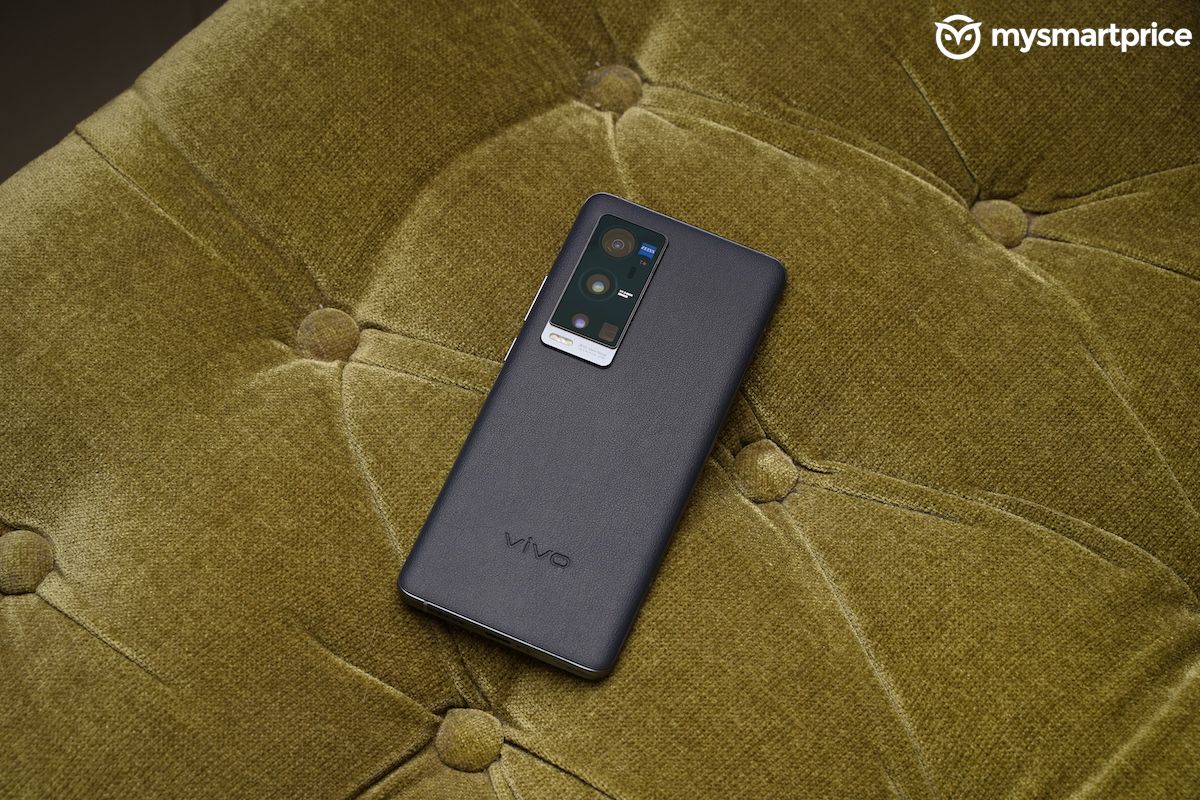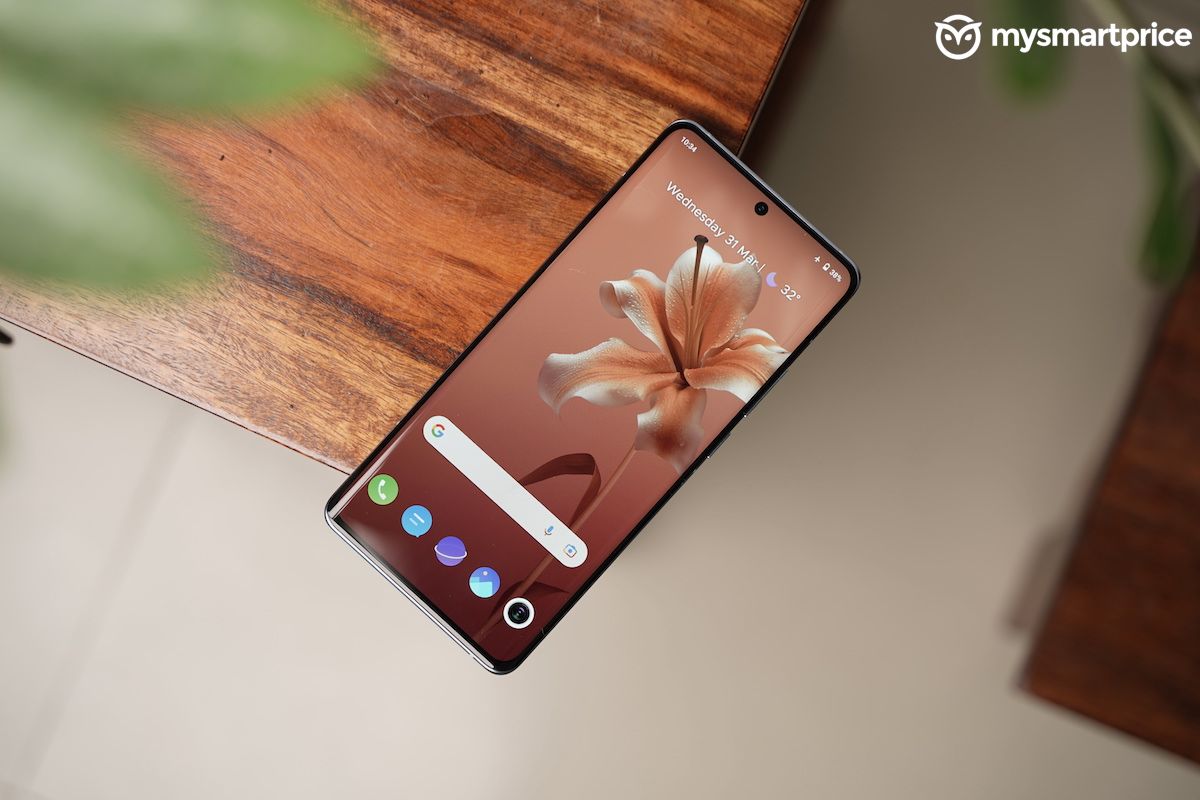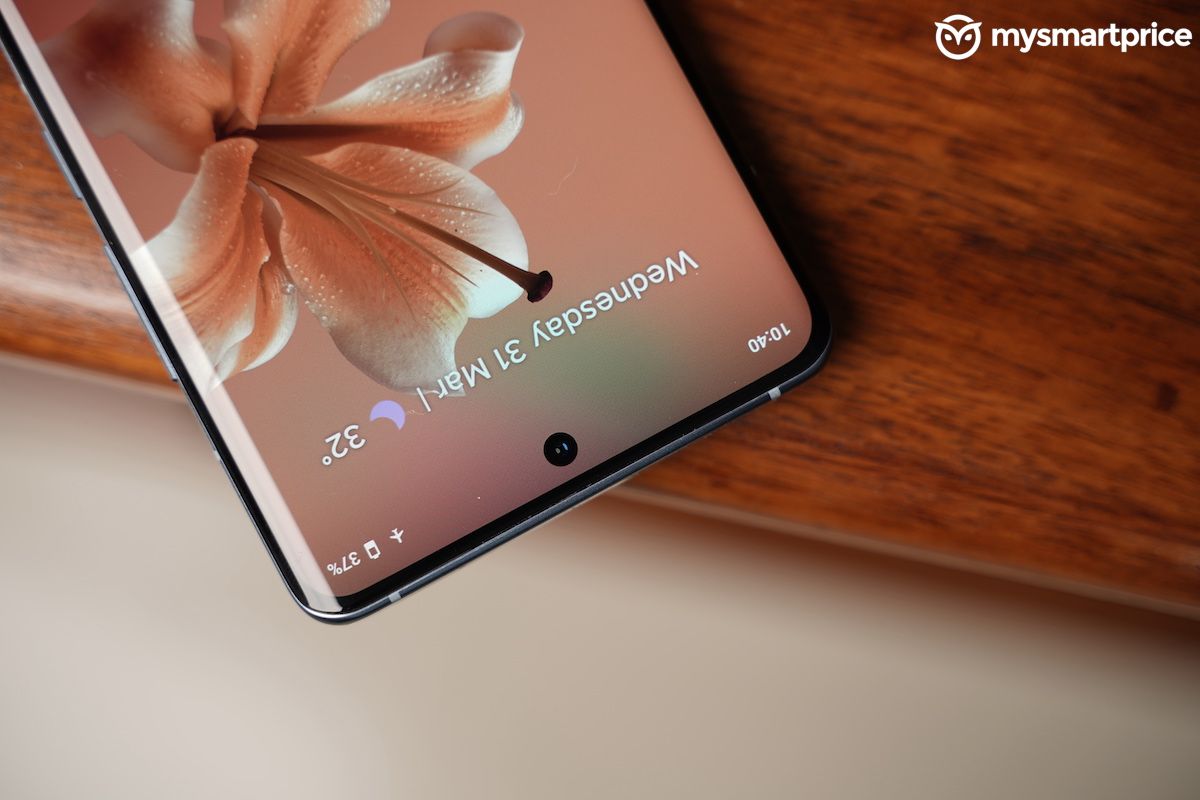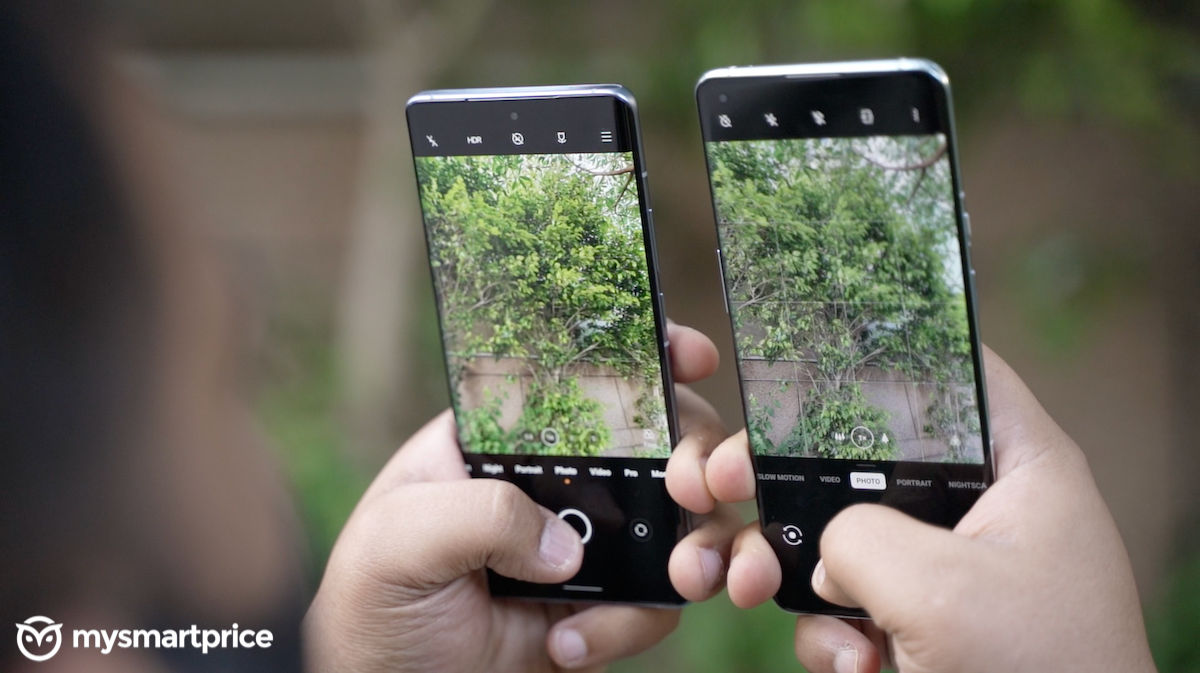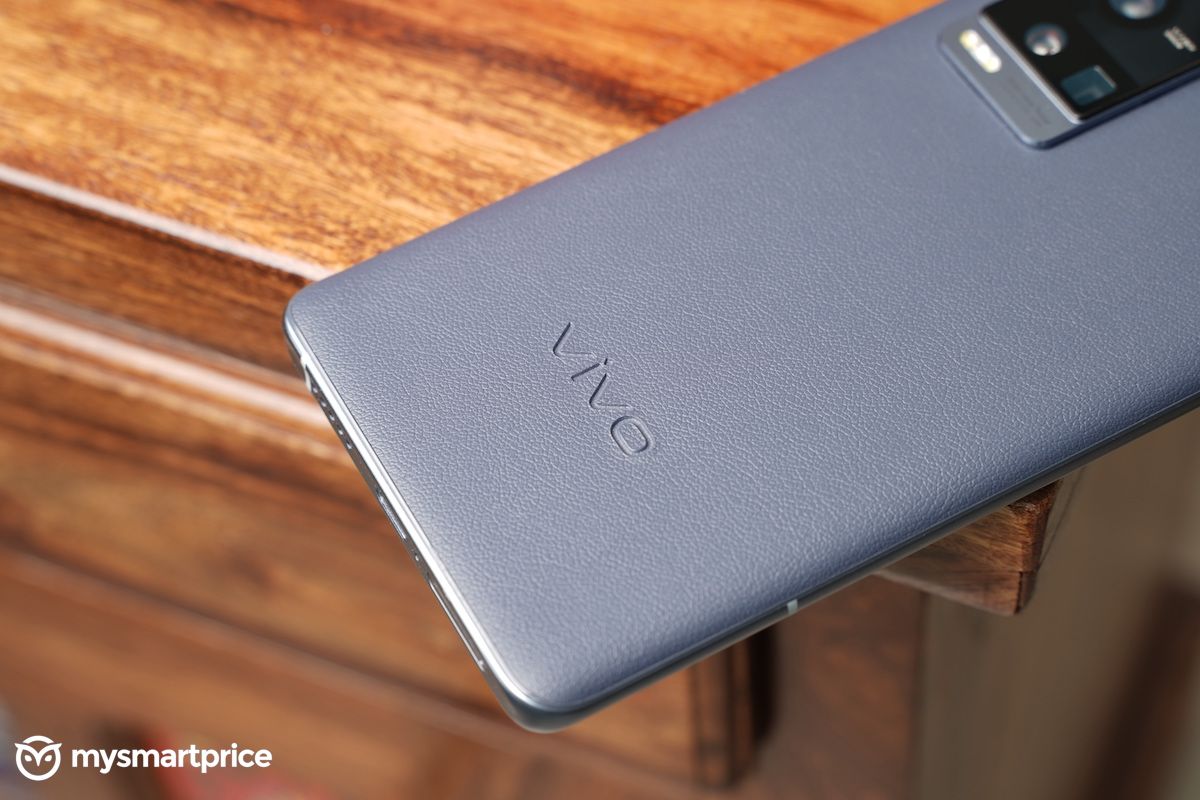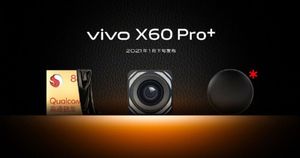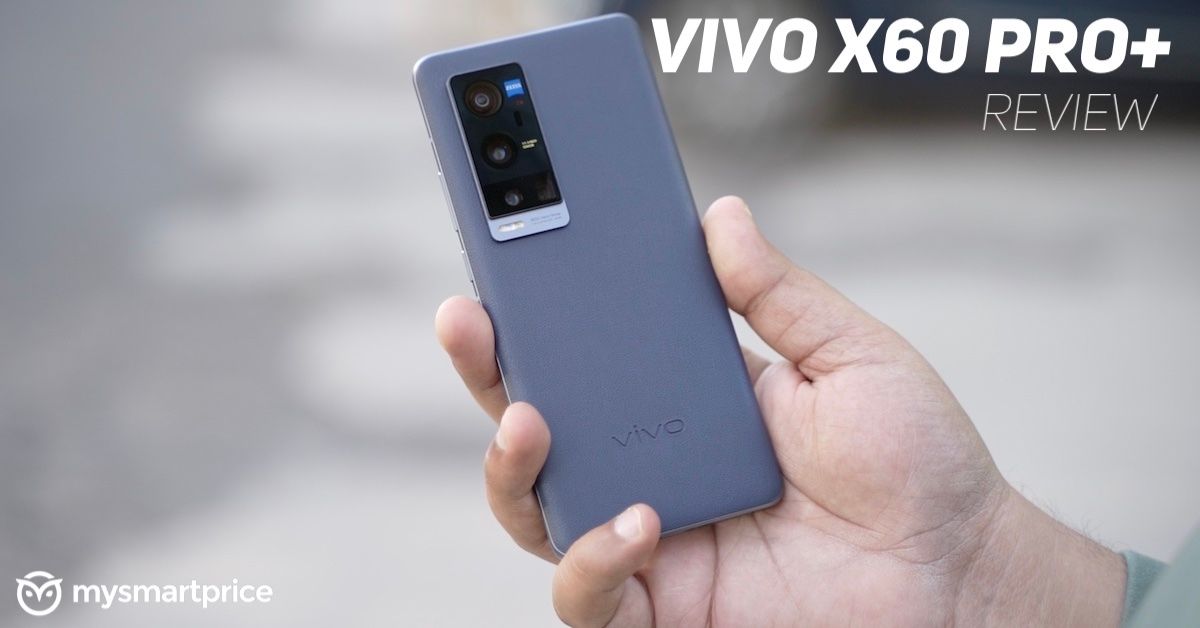
Remember when I said the OnePlus 9 Pro (review) is my favourite Android phone of 2021, yet? Yeah well…the Vivo X60 Pro Plus came very close to replacing it.
Now, if OnePlus wanted to impress you with its Hasselblad partnership, Vivo is trying to do that with a Zeiss collaboration. While the camera hardware is impressive, there are some obvious compromises in other areas of the phone’s hardware. The question is – is the camera performance so good that you can overlook the other glaring omissions? Let’s find out in my deep dive review and comparison against the OnePlus 9 Pro.
Design
That the X60 Pro Plus is a stunner is a given. It is by far one of my favourite smartphone designs out there. And, I can say this with no hesitation, the X60 Pro Plus looks better than the OnePlus 9 Pro. The Vegan Leather back is one of the nicest feeling rear textures on a phone. Plus it is lighter and feels more compact than the OnePlus 9 Pro. The carefully chiselled structure and gentle curves ensure that the in-hand feel is just sublime. I’d say, this is the best in-hand experience on a flagship smartphone out there. 
Furthemore, the two step camera module does jut out from the rear but it looks so well-built and premium. I also really appreciate the minimal Vivo logo carved out of the leather back. What’s also great is the metal frame has a soft matte finish further adding to the comfort factor. The slim metal buttons feel clicky enough. The Type-C port sits at the bottom along with the SIM card tray and speaker grille. In order to keep it slim and light, the phone doesn’t come with a headphone jack.
While everything is great about the Vivo X60 Pro Plus, the lack of IP certification is actually a let down for a phone that costs this much. That’s where the OnePlus 9 Pro takes a clear leap forward with its IP68 rating. Otherwise, as far as pure industrial design goes, the X60 Pro Plus would win all the awards in my opinion. So, round design goes to Vivo.
Display
One of the reasons why the X60 Pro Plus feels more well put together and comfortable to use is the smaller display size. You get a curved AMOLED panel, slightly more so than the OnePlus 9 Pro. It measures 6.56-inches diagonally and is a FHD+ panel with a 120Hz refresh rate. Yes, as far as the display resolution goes, the OnePlus 9 Pro is better with QHD+ resolution. But, in daily life I actually use the OnePlus 9 Pro and even the Samsung Galaxy S21 Ultra in FHD+ resolution, so this doesn’t really matter to me. It could to you.
As for the quality of this panel, I will tell you this, it can get really bright outdoors and indoors. Plus it has a theoretical maximum brightness limit of 1300 nits, while watching HDR content on supported streaming platforms such as Netflix. In fact, I found the auto brightness to be far more reliable on the X60 Pro Plus compared to the OnePlus 9 Pro. Plus, you get the option to switch to a Professional colour tuning as well for neutral colours. You also have the option to cycle between 60Hz, 120Hz constant, and Smart Switch refresh rates. The display just glides when you touch and has a fast touch sampling rate for gaming too.
Additionally, there is a fun and customisable Always On display option. As for the in-display fingerprint scanner, it is at the same low position as the OnePlus 9 Pro. Although, is pretty fast to unlock the phone and so is the face unlock mechanism. Now, while the haptic feedback is provided by a precise motor, it is not as good as the OnePlus 9 Pro’s feedback. You get a thin vibration feedback on the X60 Pro Plus as opposed to the weighty one on the OnePlus 9 Pro.
Also read: Samsung Galaxy S21 Ultra Review – Exynosdinary!
Overall, the display on the Vivo X60 Pro Plus didn’t disappoint me at all and I’d say it is definitely flagship-grade. But yes, the OnePlus 9 Pro edges ahead with its QHD+ resolution and better haptic feedback.
Camera
Coming to the piece de resistance of the X60 Pro Plus, it’s camera setup. You get four cameras on the rear: a 50MP 1/1.31-inch Samsung GN1 sensor attached to a super wide f/1.59 aperture lens, a 32MP 2x telephoto that Vivo has dubbed a Portrait lens since it has a 50mm Prime lens, a 48MP ultrawide angle GIMBAL camera, and an 8MP 5X periscope zoom camera. Apart from this, you get a Zeiss T* coating for reducing ghosting and flaring on the main camera. On the front, there’s a 32MP selfie shooter.
To know how the X60 Pro Plus fares against the OnePlus 9 Pro, watch the video embedded below. To make it easier, the video will start from the time stamp of the camera section. It will be easier for you to comprehend and understand.
To sum it up, what I can tell after shooting with both the cameras is the OnePlus 9 Pro offers more neutral colours, crisper textures in both regular and ultrawide cameras and better facial tones in human shots in daylight. The X60 Pro Plus has an advantage in dynamic range, telephoto, videos, and to some extent low light shots. I can’t really pick one outright winner here.
Performance
Alright, coming to the performance, the X60 Pro Plus is packed to the gills with top end hardware. You get a Snapdragon 888 SoC, 12GB of LPDDR5 RAM, and 256GB of internal UFS 3.1 storage. As far as synthetic benchmarks go, the X60 Pro Plus managed to achieve the highest benchmark numbers. The AnTuTu, Geekbench, and 3DMark numbers are actually better than the Galaxy S21 Ultra and the OnePlus 9 Pro. But, more importantly, the CPU doesn’t throttle as much as these phones and the phone also aced the 3DMark Wildlife stability test.
Surprisingly, Vivo has done a relatively good job of optimising the otherwise power hungry Snapdragon 888 processor. The phone still does get warm under heavy load and spreads it out to the metal frame, all because of the enormous power on offer. But, it definitely doesn’t throttle even a bit. I didn’t expect Vivo to make a performance monster and take on the OnePlus 9 Pro head on. Additionally, the RAM performance with additional Virtual RAM commissioning is great too. In fact, we have a fantastic explainer on how Virtual RAM actually works up on our website. I will link it down below in the description. Essentially, you will rarely feel the RAM struggle to keep apps in memory.
If you are buying the V60 Pro Plus for future proofing yourself with 5G support, the phone offers more band support than the OnePlus 9 Pro. You get support for n1/n28/n41/n77/n78 5G bands, which are three more than what the OnePlus 9 Pro offers. Furthermore, the 4G performance was fantastic with support for Carrier Aggregation. And, the earpiece quality was great for calls as well.
That said, the one area where the X60 Pro Plus falters shortly is in the speaker performance where the OnePlus 9 Pro takes a clear leap with its stereo setup. The mono speaker on the X60 Pro Plus just doesn’t sound very loud or crisp either. In fact, while scrolling through Insta Reels or playing rounds of Call of Duty Mobile, I had to stress to hear the sound clearly.
On the contrary, the sound through the passthrough Type-C dongle using my 1More Triple Driver was pretty awesome. The phone actually uses a Cirrus Logic CS43131 DAC and has the Hi Res certification as well. This DAC offers support for headphones up to 600 ohms of impedance. Fantastic stuff for audio nerds like myself. Also, I must appreciate Vivo for bundling everything a buyer would need right inside the box, from a fast charger, to a pair of earphones, to even a Type-C dongle. This is better than OnePlus’ packaging.
Software
What’s not fantastic or premium-grade is the software. Don’t get me wrong, Funtouch OS 11 based on Android 11 has improved by a lot, but there are way too many “buts” you’ve got to contend with. Let me break down my experience, starting with the positives:
- I really like the fact that Funtouch is not a weird mixture of Android and iOS anymore. The UI now offers a proper app drawer, and a Quick Settings panel instead of that weird Control Centre rip off.
- I appreciate the inclusion of Google’s Discover Feed on the -1 page.
- You get tons of configurable short cuts including the most important 3-finger swipe down to take a screenshot.
- The Dynamic Effect options run deep too. From the option to tweak the fingerprint icon animation to actual screen on/off animation, you can play around with anything.
- The Game Mode is actually pretty cool with the option to switch on 4D vibrations, and an Eagle Eye mode that enhances colours and brightness to spot your enemies better. I also really like how Vivo uses the power of the SD888 chip to actually run a windowed version of an app.
Now, about the negatives:
- The phone is filled with bloatware from the get go including Moj. Plus, you get a separate V-apps store apart from the Play Store that keeps spamming you with notifications. And, even the Search function throws up results from this store instead of Play Store.
- The animations are purposely slowed down and that gives you a feeling that the phone is not fast, which it actually is. I actually changed the animation scale settings to 0.5x to actually make it run faster and smoother.
- You cannot search widgets or bulk delete apps from the Home Screen.
Oxygen OS on the OnePlus 9 Pro is, according to me, a more sophisticated Android software for sure.
Battery Life
In order to make the phone slimmer and easier to use, Vivo has decided to go with a 4300mAh battery, which is only slightly smaller than the OnePlus 9 Pro but the battery life is actually slightly better on the X60 Pro Plus. Using the Smart Switch refresh rate option as my standard, I got around 5 hours and 30 mins of SoT for my very stressful use case. You can get higher if you don’t perform too many intensive tasks on the phone.
However, charging speeds and charging times are easily bested by the OnePlus 9 Pro. It took me close to 58 minutes to charge the X60 Pro Plus using the bundled charger. But, the OnePlus 9 Pro charges in a flat 30 minute timeframe. Plus, you also get support for not just any wireless charging but 50W super fast charging. The X60 Pro Plus doesn’t even give you that option, which is a major pity.
Should You Buy the X60 Pro Plus or the OnePlus 9 Pro?
Let’s get straight to the point, the X60 Pro Plus is definitely a better designed phone and offers a slightly better raw performance compared to the OnePlus 9 Pro. But, the display, software experience, IP rating, speakers, charging speeds and wireless charging support, are all in favour of the OnePlus 9 Pro. Which leaves us with the camera performance.
See, the X60 Pro Plus is definitely more versatile and a great, great camera setup but the OnePlus 9 Pro is no slouch. In fact, in many situations, I’d actually pick the 9 Pro over the X60 Pro Plus. So yeah, there’s no comfortable lead for the X60 Pro Plus here like I was expecting. I’d say both the camera systems are neck-to-neck in performance and the winner would be based on individual shooting preferences.
But you know what? There are times when a phone’s design just wins you over and the X60 Pro Plus does that. I want to keep using this phone because it has the best ergonomics on a flagship phone IMO. Looks like my perfect Android phone would be one that looks and feels like the Vivo X60 Pro Plus with all the bells and whistles that you get on a OnePlus 9 Pro such as the wireless charging, IP rating, and stereo speakers. Just tells you how you just can’t have it all.
I hope this review/comparison has helped you figure out which phone you should go for between the OnePlus 9 Pro and the Vivo X60 Pro Plus. If you are still confused, hit me up in the comments below and I’ll try to help.


